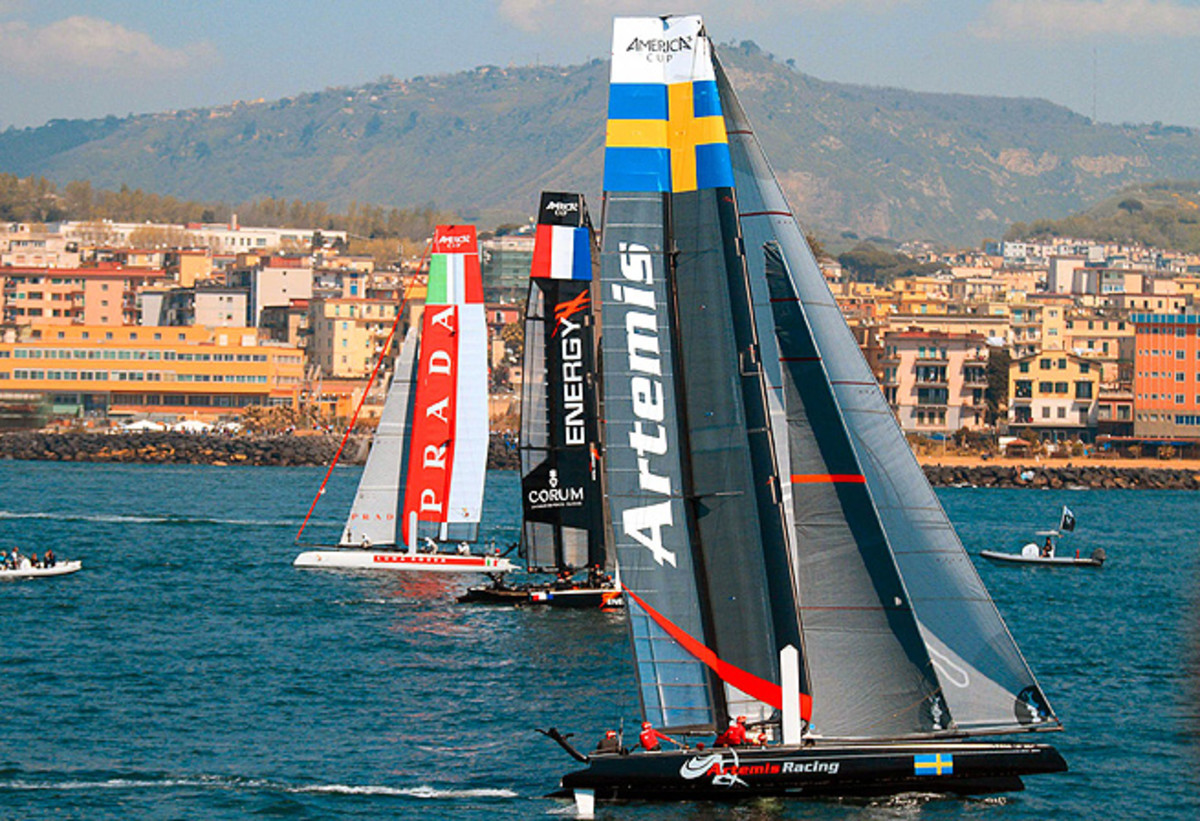One sailor dies as America's Cup sailboat capsizes in practice
SAN FRANCISCO (AP) -- The America's Cup catamaran that capsized in San Francisco Bay, killing an Olympic gold medalist, nosedived during a difficult maneuver and broke into many pieces, an official said Friday.
However, it remained unclear why the Artemis flipped on Thursday, trapping crew member Andrew "Bart" Simpson under the wreckage for at least 10 minutes.
America's Cup organizers also said Friday it was unclear what affect the fatality might have on the series of races scheduled to begin on July 6.
"Nothing is off the table," said Stephen Barclay, chief executive of the America's Cup Event Authority. "We need to know what happened."
Murray said America's Cup organizers have launched an investigation. The San Francisco Police Department is also looking into the incident.
Another organizing official, Iain Murray, said conditions Thursday afternoon were typical on San Francisco Bay, which often sees hard-blowing winds. The Artemis was operating in winds of 15 to 20 knots, with occasionally stiffer gusts.
Murray said Artemis Racing's catamaran was attempting to change direction and turn down wind when it capsized. Though difficult, the maneuver was normal, he said.
Murray said Simpson was on a trampoline on the windward side of the yacht with crew members and got trapped under some solid sections of the yacht, out of site to those on board who were looking for him.
"How he got to where he got to we do not know," Murray said.
Simpson, 36, was a strategist for the team that represents a Swedish yacht club. The crew was practicing with the Oracle team.
"Artemis and Oracle were out there training in what they had been doing for months," Murray said. "And looking frankly quite good."
Artemis officials didn't attend a Friday news conference and didn't return phone calls. Oracle Racing agreed to suspend its training until Monday.
"Andrew Simpson was a hugely accomplished sailor and Olympian," International Olympic Committee President Jacques Rogge, a former Olympic sailor from Belgium, said in a statement to The Associated Press. "He died pursuing his sporting passion."
It was the second time a sailor has died during training for the America's Cup. In 1999, Martin Wizner of the Spanish Challenge died almost instantly when he was hit in the head by a broken piece of equipment.
No deaths have been recorded during the actual racing since its inception in 1851.
Simpson and his partner Iain Percy won an Olympic gold medal for England in 2008 in the Star class of sailing. The duo was expected to repeat in London in 2012 but was upset by a Swedish team and settled for silver.
Artemis Racing has had its share of upheaval in the buildup to the 34th America's Cup. Late last year, skipper Terry Huthinson of Annapolis, Md., was released. He was replaced by Nathan Outteridge of Australia, who won a gold medal at the London Olympics.
The team has had technical problems, as well. Last fall, Artemis said the front beam of its AC72 catamaran was damaged during structural tests, delaying the boat's christening. A year ago, Artemis' AC72 wing sail sustained serious damage while it was being tested on a modified trimaran in Spain.
The Artemis wasn't the first America's Cup boat to capsize on the wind-swept San Francisco Bay. Oracle's $10 million boat capsized in 25-knot winds in October, and strong tides swept it four miles past the Golden Gate Bridge.
No one was injured, but the rough waters destroyed the 131-foot wing sail.
It was too soon to answer questions about the safety of the high-tech boats on the San Francisco Bay, Barclay said.
"Obviously a catamaran is more prone to capsizing than a mono-hull," he said. "Whether boats are safe or unsafe, we're not going to speculate on those things."
In addition to sailors wearing crash helmets and life vests, chase boats carry doctors and divers, Barclay said.
"There are lots of precautions that are taken, and some of those are as a result of Oracle's mishap last year," he said.
The catamarans have proved hard to handle. The wing sail looks and acts like an airplane wing, improving the yacht's speed and maneuverability. The 7-ton boat's hulls are lifted out of the water and it skims along the waves on "foils," reducing the drag on the boat and increasing speed dramatically.






